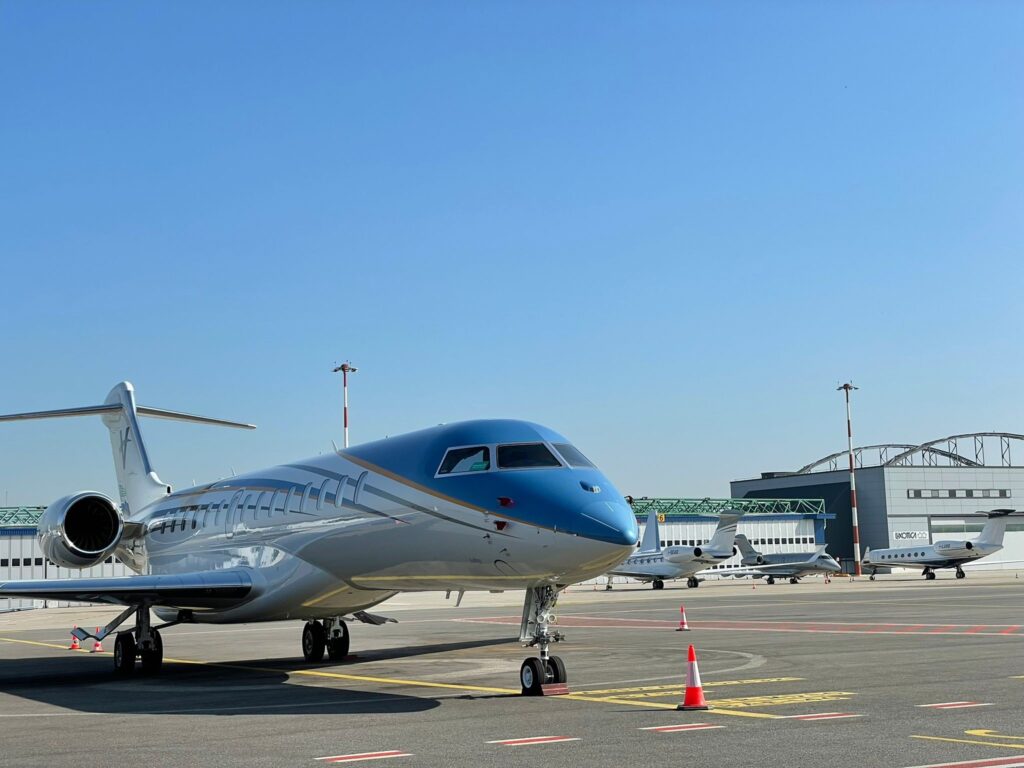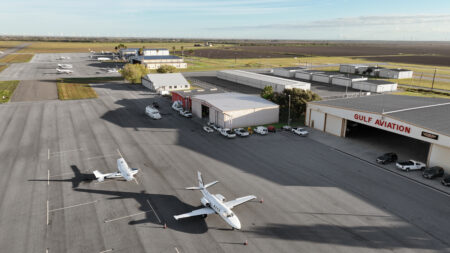Planning for a large event requires precise organization and attention to detail. Whether it’s for a Formula 1 Grand Prix, a world-renowned art fair, or music festival, these occasions demand nothing short of excellence from the FBOs and airports closest to the event. So how do industry leaders navigate these events and manage the complexities of high-traffic periods while ensuring seamless operations?
Roman Mendez, general manager of Desert Jet Center, highlights the importance of early and comprehensive planning: “Our preparations for the Coachella festival start 30 to 45 days before the event. This involves clearly defining team roles, establishing concrete goals, and organizing regular meetings with specific agendas.” This approach ensures that every team member understands their responsibilities and how they contribute to the overall success of the operation.
Chiara Dorigotti, CEO at SEA Prime agrees, noting that her team initiates planning weeks in advance for marquee events like the F1 Grand Prix and Milan Fashion Week. “The real challenge lies in anticipating not just the volume of aircraft, but also their length of stay, on top of our regular traffic,” Dorigotti says. By focusing on the quantity of expected aircraft and duration they intend to stay allows SEA Prime to optimize their resources and space effectively.
At Air Service Basel, Jérémie Gangloff, deputy FBO manager takes planning a step further. “Planning for Art Basel never really stops,” he says. “We already have the first bookings for Art 2025. The event is always in the back of our minds, prompting us to watch out for the slightest grain of sand that could derail the machine.
“You can feel the Art Basel frenzy at the airport about two months before the official start of the fair,” he says.
The annual gathering of global leaders at the World Economic Forum (WEF) in Davos, Switzerland presents unique challenges for airports and handling companies in the region. According to Roger Büchner, Cat Air Service’s CEO, planning for the WEF begins immediately after the previous year’s event concludes. “Customers and operators start sending handling requests over straight after the event,” he says.
Navigating the surge
During major events, aviation hubs experience surges in traffic that test the limits of their capabilities.
SEA Prime witnesses a threefold increase in movements, with peaks reaching 300 movements per day during the Grand Prix and Milan Fashion Week. This influx requires not additional manpower, and a recalibration of their operational approach.

Desert Jet Center reports a similar three to four times increase in normal traffic, accommodating an additional 1,700-2,000 passengers for the Coachella Music Festival. This significant uptick in both aircraft movements and passenger numbers demands a more holistic approach to management, encompassing everything from ground operations to customer service.
At Air Service Basel, the Art Basel event requires a company-wide mobilization. “During Art Basel we transition from 100 movements per week to almost 400,” says Gangloff. “It’s a dramatic shift that requires all hands on deck. Our entire team is committed to making the event a success,” Gangloff says. “Even our accounting, CAMO, and security colleagues change hats and become FBO agents for the duration of the fair.”
To handle the influx, each facility uses strategies that leverage their strengths and address their specific challenges.
Mendez says that Desert Jet Center adopts a divide-and-conquer approach. Some members focus on operational needs such as flight tracking and aircraft servicing, while others dedicate themselves to enhancing the customer experience. This allows the technical and hospitality aspects of their service to excel under pressure.
Mendez also highlights the importance of vendor coordination in their operational strategy. By closely liaising with fuel suppliers, car rental companies, catering services, and hotels, Desert Jet ensures a seamless service delivery that extends well beyond the tarmac.
SEA Prime takes a more targeted approach to staffing, strategically increasing personnel in key areas. Dorigotti explains, “We boost our numbers in apron personnel, cleaning, and security staff to cover peak times.”
“At Air Service Basel each agent has a precise mission,” Gangloff says. “We have an agent solely for limousine transfers, one for invoicing, several on the ramp for meet and greets, and one for operations side assistance via email and telephone.”

Beyond logistics
During these large events the role of FBOs extends beyond merely managing increased traffic, they also strive to create memorable experiences for their clients.
Chris Little, Desert Jet’s chief marketing officer says, “We greet guests plane-side with refreshing cold water and crafted cocktails. We offer complimentary fresh oven-baked pizza, grilled tacos, and premium ice cream. A live DJ helps get the festival vibe started early, and we’ve even had luxury vehicles on display.”
“This year during Art Basel we welcomed a young art gallery to our lounges and hangars,” says Gangloff. “Both guests and external visitors were able to take tours of the exhibition. It was a real success, and we’ll be doing it again next year.”

Planning is key
All the industry experts stress the importance of early planning for operators flying in for major events.
Gangloff believes that early booking is the most vital piece of advice he can give. “Don’t book your flight at the last minute,” he says. “We already have some confirmed reservations for Art Basel 2025.”
Dorigotti of SEA Prime highlights the often overlooked issue of aircraft parking. “Parking can become critical,” she notes. “The recommendation is to plan the trip in advance or to book hangar space to avoid repositioning.”
Parking also becomes a significant issue at Zurich Airport during the World Economic Forum and despite early requests, confirming parking and slots with Cat Air Service is not possible until late in the year, says Büchner. “We always have to ask clients to wait until the end of October as that is when then the slot coordination system is open for January,” he says.
Mendez emphasizes the importance of ongoing communication between operators and the FBO. “We are very involved with our operators and individuals flying in,” he explains.
“It includes clear communication, coordination, and proactive support from our team. We have pre-event updates and detailed instructions that comprehensively cover what operators can expect, as well as updates during the event.”

Challenges
Gangloff sees any challenges that the art show produces as opportunities for growth and to refine the processes year after year.
“Our organization is like Swiss clockwork,” Gangloff says. “Of course, we have to deal with unforeseen events, but every mistake makes us stronger for the future.
“Slots, AOG aircraft, or a breakdown in airspace management can completely block our tarmac and operations, but every problem has a solution.”
Dorigotti notes that international events happen almost monthly in Milan, so her team at SEA Prime has developed a high level of expertise in handling the associated challenges.
Mendez says, “After the event, we seek operator feedback on what worked well and what could be improved through a survey or direct conversation. We use this feedback to make adjustments to future events, whether it’s refining communication processes, adjusting operational plans, or improving support methods.”
However, the success of operations during high-pressure events depends as much on the commitment of employees as it is about the processes.
At Desert Jet Center, Mendez says that even people from departments not typically involved in day-to-day operations step up during major events and SEA Prime also increases staffing across key areas to help deal with peak times.
Any large event can present a specific set of challenges for the aviation companies and FBOs it is held near. Dealing with an influx of travelers often requires meticulous planning, flexibility, and strategic decision-making. But despite the pressure, business aviation adapts and evolves to meet the demands of global events.





